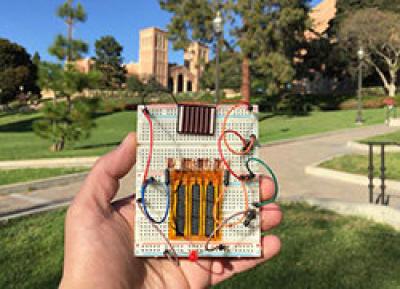Researchers at UCLA’s California NanoSystems Institute have successfully combined laser-scribed graphene and manganese dioxide (which is currently used in alkaline batteries since it holds a lot of charge and is cheap and abundant) to create a new energy storage device with outstanding qualities. The new hybrid supercapacitor stores large amounts of energy, recharges quickly, and can last for more than 10,000 recharge cycles.

The scientists also created a microsupercapacitor that is small enough to fit in wearable or implantable devices. At just a fifth of the thickness of a sheet of paper, it can hold more than twice as much charge as a typical thin-film lithium battery.
Both components are made from combining the two materials, and can be fabricated without the need for extreme temperatures or the expensive dry rooms required to produce today’s supercapacitors. The researchers also found that the supercapacitor could quickly store electrical charge generated by a solar cell during the day, hold the charge until evening, and then power a LED overnight, showing promise for off-grid street lighting.